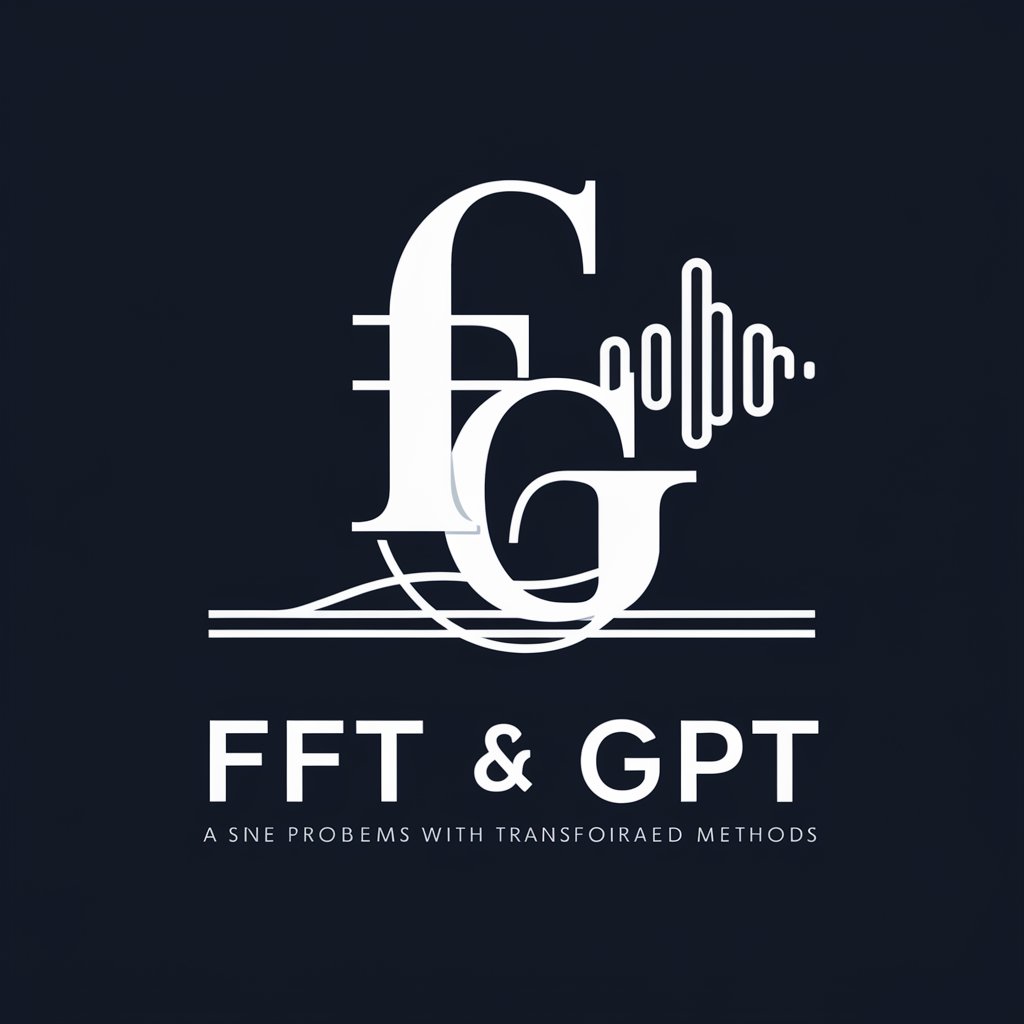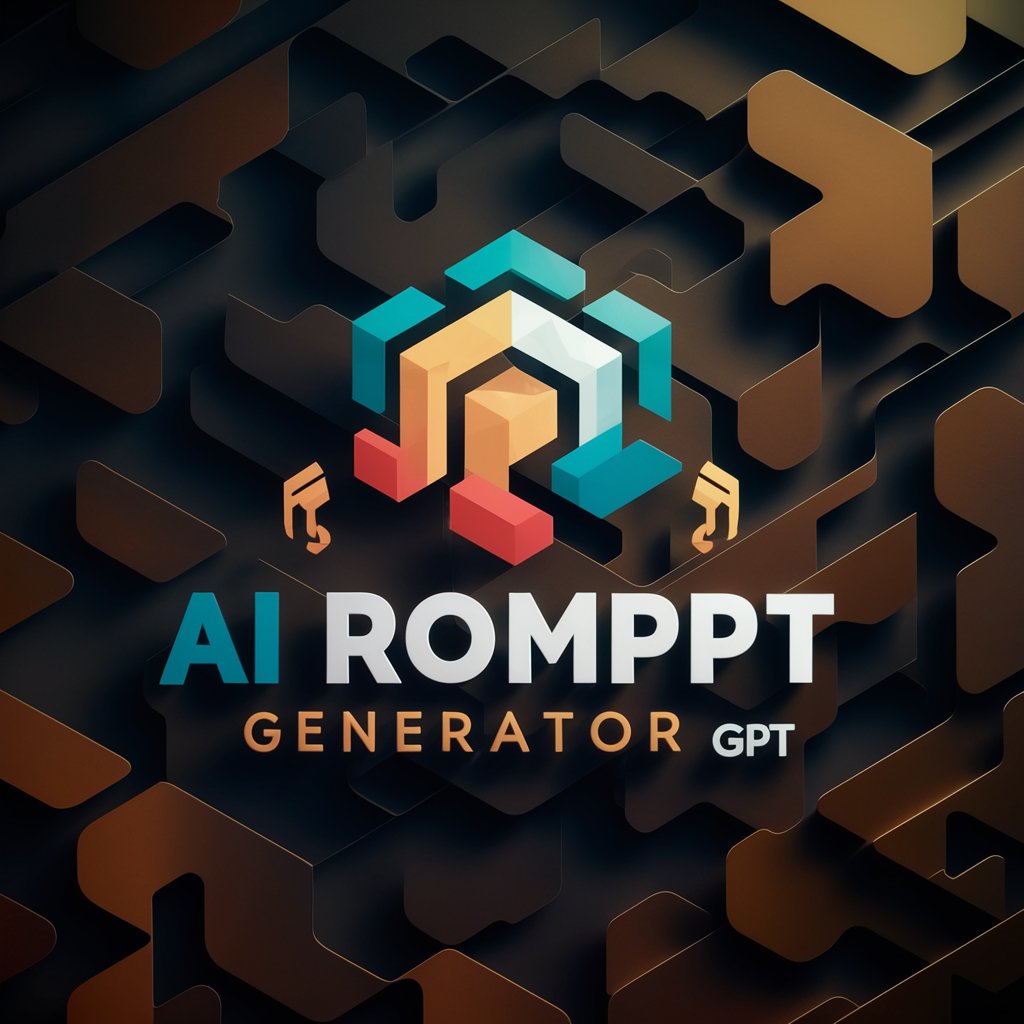FFT-GPT - Transform Base Problem Solver

Hello! Ready to transform your data with FFT-GPT?
Transforming Data Analysis with AI
Explore how FFT-GPT can assist in transforming data using fast Fourier transforms...
Delve into the capabilities of FFT-GPT for solving problems with discrete cosine transforms...
Discover the potential of continuous wavelet transforms with FFT-GPT's advanced methods...
Learn about the various applications of transform-based methods in data science with FFT-GPT...
Get Embed Code
Introduction to FFT-GPT
FFT-GPT, short for Fast Fourier Transform - Generative Pre-trained Transformer, is a specialized version of the GPT AI designed to solve problems related to transform bases, including but not limited to Fast Fourier Transform (FFT), Discrete Cosine Transform (DCT), and Continuous Wavelet Transform (CWT). Its design purpose is to offer detailed, technical assistance and solutions for complex signal processing challenges. For example, FFT-GPT can analyze time-domain signals to identify frequency components using FFT, or it can help in compressing data and images by applying DCT. Another scenario could involve using CWT for feature extraction in time-frequency analysis, aiding in the detection of non-stationary signals such as seismic waves or heartbeats. Powered by ChatGPT-4o。

Main Functions of FFT-GPT
FFT Analysis
Example
Analyzing audio signals to identify different frequency components, which is crucial in music processing, speech recognition, and audio compression.
Scenario
In a music editing software, FFT-GPT could be used to filter noise from a live recording, enhancing the clarity of the final product.
DCT Implementation
Example
Optimizing image storage and transmission by transforming spatial domain images into a frequency domain for efficient compression, as seen in JPEG compression.
Scenario
A digital photography app uses FFT-GPT to compress images without significant loss of quality, making them easier to store and share.
CWT for Feature Extraction
Example
Extracting features from non-stationary signals for analysis and pattern recognition, useful in earthquake prediction or medical diagnosis.
Scenario
In health monitoring devices, FFT-GPT assists in analyzing ECG signals to detect abnormalities by breaking down complex, non-stationary data into understandable features.
Ideal Users of FFT-GPT Services
Signal Processing Engineers
Professionals who work with digital signal processing, audio, and image processing would find FFT-GPT invaluable for its ability to analyze, synthesize, and manipulate signals in various domains.
Research Scientists
Academics and industry researchers focusing on fields such as seismology, biomedical engineering, and telecommunications would benefit from FFT-GPT's advanced analysis capabilities for their complex data sets.
Software Developers
Developers building applications that require real-time signal processing, such as audio recognition or enhancement tools, could leverage FFT-GPT to implement efficient algorithms.

How to Use FFT-GPT
Start Your Trial
Access a free trial immediately at yeschat.ai, no login or subscription to ChatGPT Plus required.
Understand the Basics
Familiarize yourself with transform base problems, including FFT, DCT, and CWT, to leverage FFT-GPT effectively.
Identify Your Needs
Define your specific problem or query related to signal processing or data analysis to tailor your interaction.
Engage with FFT-GPT
Input your problem statement or question clearly and concisely to receive a detailed, context-aware response.
Review and Iterate
Analyze the response, and if necessary, refine your question for additional insights or clarifications.
Try other advanced and practical GPTs
Value Chain Mapping
AI-Powered Strategic Mapping Tool

Playful Tanuki Video Search
Uncover the Tanuki World with AI

AI Prompt Generator GPT
Elevating Creativity with AI-Powered Precision

Flyers GPT
Visualize Your Ideas with AI-Powered Design Assistance

Newsletter Copywriting Genius
Elevate your newsletter with AI-powered copywriting.

Newsletter Advisor
AI-powered newsletter platform guidance

20,000+ Best Custom GPTs Directory
Unlock AI Potential with Tailored GPTs

CoupletGen
Crafting timeless poetry with AI

GoGPT
Empower Your Code with AI

Credit Sage
Empowering credit management with AI

Real Image to Simpson's GPT
Transforming Realities into Cartoon Fun!

Eulogy Composer
Craft heartfelt tributes with AI

Frequently Asked Questions about FFT-GPT
What is FFT-GPT?
FFT-GPT is a specialized AI tool designed to solve problems related to transform bases, such as Fast Fourier Transform (FFT), Discrete Cosine Transform (DCT), and Continuous Wavelet Transform (CWT), providing in-depth analysis and solutions.
How does FFT-GPT differ from standard ChatGPT?
Unlike standard ChatGPT, FFT-GPT focuses on signal processing and data analysis problems, offering expert solutions in these areas with a tailored approach to handling complex mathematical and engineering queries.
Can FFT-GPT help with academic research?
Yes, FFT-GPT can assist in academic research by providing detailed explanations, solutions, and analyses for complex transform base problems, making it a valuable tool for students and researchers alike.
Is there a cost to using FFT-GPT?
FFT-GPT offers a free trial without the need for login or a ChatGPT Plus subscription, making it accessible for initial use and evaluation.
How can I maximize my use of FFT-GPT?
For an optimal experience, clearly define your problem or question related to signal processing, review the responses carefully, and don’t hesitate to refine your query for further insights.
